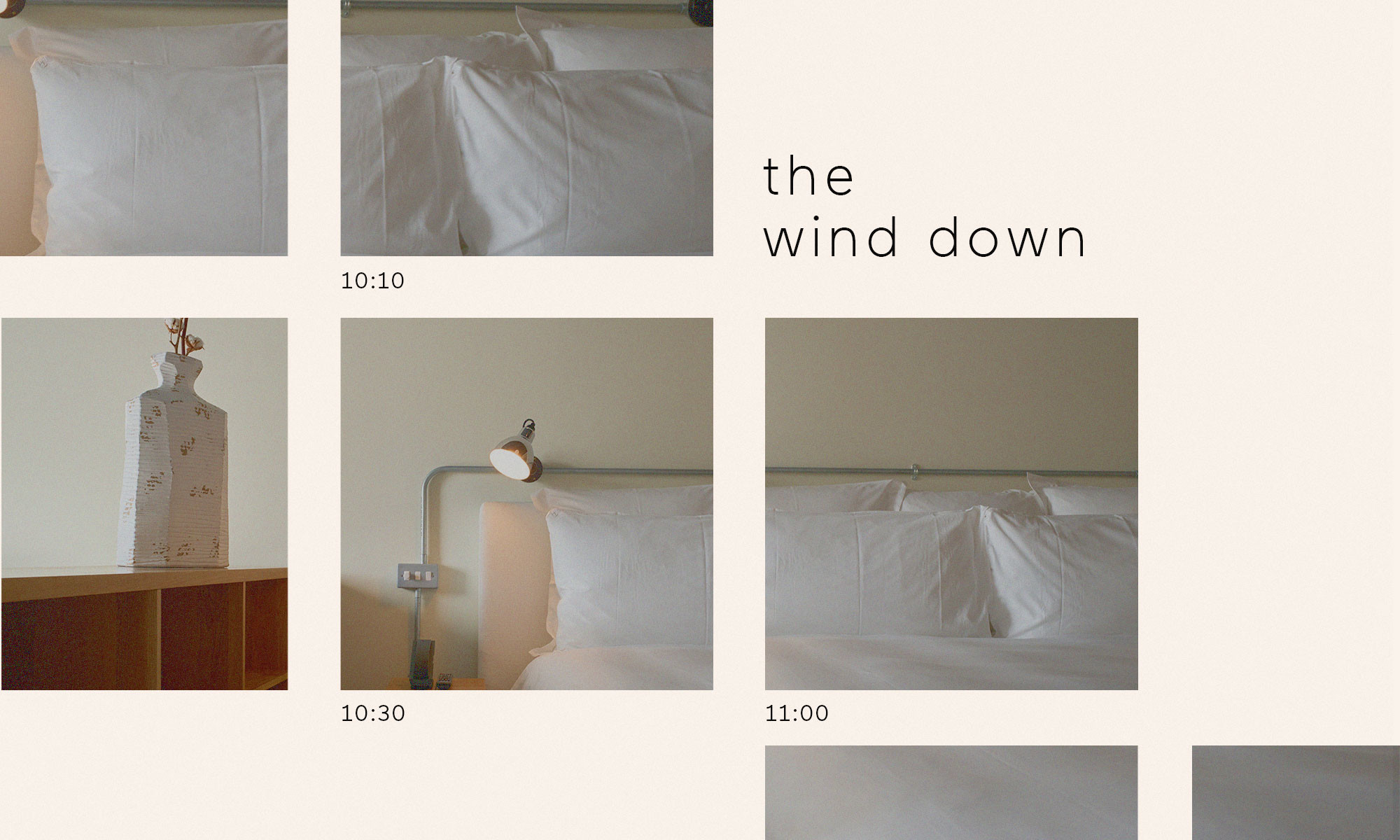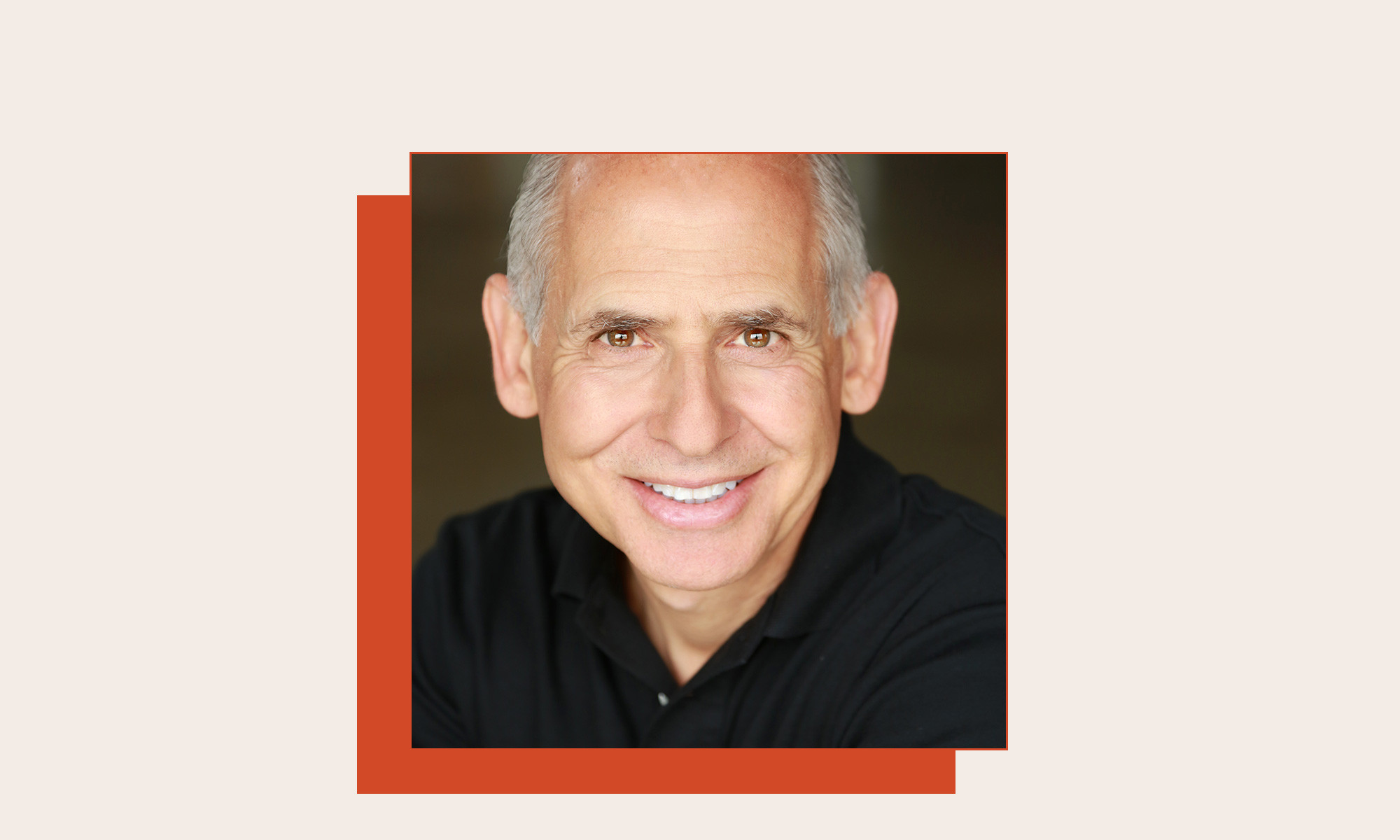Meditation Is Not Required
A Dzogchen-inspired teaching on freeing the mind from ideas of meditative achievement The post Meditation Is Not Required appeared first on Tricycle: The Buddhist Review.

How do we settle the mind, rest the mind, given the turmoil of our times? What shall we do when we hear something in the news or disturbing information we fear? How can we settle the mind with what we are or will be confronted with as we face things in the world out of our control? Do we need years of meditation, or is there something more immediate, more accessible, more innate than the practice of meditation? Is there a more sublime meditation than the kind that follows instructions? Can we let the mind rest? Can we let the mind be perfect as it is?
Once a student at one of my talks said that they had been trying to meditate and it was making them suffer. The person’s facial expression showed anguish. I leaned toward the student in a room of about sixty people and said, “Stop meditating.” I said this at a Buddhist meditation center, wearing my Zen Buddhist robes. It was an offer to the student to not struggle; to stop forcing themselves to reach for some idea of a meditative state of being; to forget about levitating above the shaky ground of suffering and drifting off into the heaven of nirvana.
I wanted to throw that person off their cushion or seat of meditative achievement. I wanted to dismantle the expert mind of knowing how to meditate. I feel it important to startle meditators and shake them loose from the habit of meditation, the notion that thoughts are the worst thing that can happen to a meditator. My interest is to encourage meditators to expand the walls of meditation beyond instruction, posture, time spent, and methods of breathing—to cease targeting their meditation upon their perception of transformation or change that is inherently already taking place. Many say they don’t have time to meditate. This is because they see the act of meditation as something in which one steps out of or stops their lives and then returns with a clear mind and a happy heart. It is as if they go into some invisible magic box and erase all thinking.
In asking aspirants to stop meditating I’m turning hardened views of meditation toward the nature of mind as already free and allowing the mind to remain free of our alterations.
Many are taught in regard to meditation to pay attention, to cultivate, to be mindful, to be in the present moment, to count the breath, to cease discursive thinking, to concentrate, to achieve emptiness, to think nondually, to look deeply, or to do something to stop our minds from being a problem. Some are taught to listen, and yet this listening often becomes yet another task to accomplish.
Many try to do the things I just mentioned all at the onset of their meditation practice and then try to master it all within a month or two. They feel they must hurry toward a profound state of focus and a unified consciousness of the highest reality. They must hurry so that all suffering can cease and so that all is good at their job or in relationship with loved ones. The practice of meditation then becomes an intellectual effort, a task, hard work in the midst of other hard work, a place of struggle, and even perhaps a source of suffering. What would it feel like to climb down from the ladder of mastering meditation and to land on relief, on a peaceful relationship with the mind?
It is not our task to create awareness, awakening, or liberation through practice or meditation. We are not to force these things upon ourselves by manipulating our breath and our bodies. Buddhahood exists without meditation, whether we encounter it or not. Buddhahood, awareness, awakening, and liberation are primordial, timeless, and inconceivable, yet they manifest.
The good news is we are made aware and awaken in the rising of thoughts. Yes, the very same thoughts that we work so hard to diminish or eliminate through meditation are reflections or manifestations that arise in our perfect minds as awareness, liberation, and awakening. It is only we who take up the fleeting thoughts and churn them for days, weeks, or months, or give them concrete importance and meaning. It is OK to allow our minds to think, to race about. It is what we do with those thoughts that often brings suffering. When we turn our racing thoughts into action, we become impulsive, anxious, impatient, and intent on making a life made of what we think life is. If we waited a hundred days to act on many of our thoughts, we probably would find ourselves in the stillness and awareness we push so hard to accomplish with meditation.
Buddhahood exists without meditation, whether we encounter it or not.
Our thoughts feel important and appear to be the most crucial function of our minds. We use our unseasoned thoughts to understand ourselves and the world around us. We use thoughts in an effort to be “better” humans.
Our work on ourselves is to be admired, and yet we suffer when we become tangled and confused trying to dissect and analyze our thoughts in order to improve. We may even suffer a sense of failure from having not mastered less thinking. Often, we are distressed and we give up when we feel our search for tranquility and serenity is disrupted by thoughts. Then we attempt to settle the mind, to slow it down, with great dissatisfaction when we are unable to do so. Fortunately, thoughts do have an important function, but it is not as mundane as getting us through life.
Settling the mind does not always mean calming down or stopping excessive thinking. It is not deciding what a settled mind is and then creating it. Consider this: A settled mind can take place when a thought arises and you do nothing—no matter how many times the thought arises. The mind and body will rest within this action of doing nothing while continuing breathing. You don’t have to stop and take a breath when you are already breathing. The breath you are breathing is good enough. Even noticing the breath is doing something. In doing nothing, awareness, and perhaps even awakening, is experienced. If you feel confused, it doesn’t mean that awareness and awakening are not present. It means that the mind is activated and is providing you a chance to let go of or cling to something you think is crucial and important. You have to simply become aware of this.
The nature of the mind is to reveal, through the manifestation of thoughts, our own awareness. It shows us what we are aware of or what we awaken to. When the mind is settled, we are resting into what is being revealed, whether we feel negative or positive about it or have conflicting feelings and confusion. We don’t need to do anything with what is being revealed. Even with cognitive thinking or conceptualization or the organization of our thoughts, there is revelation and insight. We can settle with these thoughts—whether they entail confusion, racing mind, or cognitive conceptualization—as they all arise and fall, bringing realization to us. In that moment, let all thoughts be an experience free from suppression. In this way, we are not forcing awareness or awakening—creating our own experiences—but instead allowing what is organically happening within us to be free to do so. With this view of thoughts, the body and mind naturally settle.
The thoughts of your ordinary mind will inform you of what to add to your to-do list. But by handling spontaneous thoughts without observing, witnessing, contemplating, or even meditating, the possibility of a more spacious awareness can arise.
What I am suggesting is a nonmeditative and spontaneous experience with our thoughts that can relieve us from being tangled up in the 3,000 thoughts and the emotions that come up with them without altering our breath. It can relieve us of holding meditation only as an enactment, skill, or tool.
Before attempting a lifelong journey of mastering the mind, as some feel they are doing in meditation, how can we recognize the nature of mind as fluid, illuminating, and liberating?
What comes up in the mind is already liberated. This is not what we normally hear when first learning how to meditate. Meditation instruction leans toward the breath and tends to brush over the experience of thoughts as something that happens throughout our breathing. So often we don’t really know what to do with all our thoughts. We certainly don’t feel like we are in the experience of liberation when we are thinking.
When I was a child, it was a preoccupation of mine to daydream. As I grew up, I continued to daydream. Churning thought after thought—old ones and new ones—it became a sort of childhood game. I enjoyed revisiting and assessing what the mind brought forth. I began to write down what I thought about these thoughts—and so, more thoughts. It was an infinite solitary pastime activity. Later, I realized the activity of daydreaming created a massive collection of a million thoughts to be accessed when I was bored or needed something to do. When I began meditation as a practice, the collection was my go-to in order to remain awake, to be entertained, or to pass the time. It was my kind of meditation.
What comes up in the mind is already liberated.
Eventually, after some time of sitting in stillness and silence in Zen practice, suddenly I stopped my kind of meditating—which is to say, I stopped daydreaming. I stopped counting my breath or trying to be still. I let go of any effort to be present or be in the moment, to do this or that. I just sat as if I were not meditating, as if I were not a meditator, not a Zen priest, not Buddhist, not a teacher, not a student, not a person—but rather simply the breaths of the ancestors. With such breathing in a nonmeditative state, the mind settled in such freedom and allowed thoughts to do what they do, which is to release themselves by rising up in awareness and leaving. I was free of all I had been told to do with my thoughts. I was free to rest in the awareness and awakening without feeling there was something to do.
If you think of thoughts as reflections on water, appearing and then disappearing, then like a wave, the thoughts rise up and then dive back into the body of the ocean from which they came. As they rise, the primordial experience of awareness and liberation is being manifested with each thought. We might see things, people, places, and ideas in our mind’s eye, but nothing of our thoughts can be transformed in that moment, nor do they need to be. We might stop and say, “Ah, I need to work on that,” or “Oh no, not that again.” If we do not respond, if we don’t go find someone to tell about one of our 3,000 thoughts, we can experience them as acts of liberation. They come up and dive back into the ocean. This is the reason folks call it riding the waves, allowing the water to carry away our collection of thoughts. In this way, all thoughts, all thinking, can be experienced as liberation.
Thoughts arise spontaneously and move in an instant, giving you an experience of release and freedom, if you are courageous enough to let them go. Can you let them go without feeling you might be missing out on something important or interesting? Can you ride the wave of thoughts without being seduced by them?
All thoughts are lucid luminosity (Tib.: ‘od gsal), says Longchenpa, a 14th-century Tibetan scholar-yogi of the Nyingma school of Tibetan Buddhism, known for writing some of the greatest works on Dzogchen. When it is said that all thoughts are lucid luminosity, it is to say when thoughts arise, it is an experience of awareness and awakening. The light of the teachings, of the dharma from aeons ago, sheds light on all thoughts. The nature of the mind is to reveal or illuminate what is reflected on the ocean of our minds.
In meditation, we might try to suppress our thoughts, to breathe them away. The nonmeditative act is to allow the lucid and clarity of the mind to serve you. Often we hear the words clear seeing or clarity. Many seek this clarity in meditation. However, clarity is inherently present in the lucidity of our thoughts when they arise. In nonmeditation we simply see. This is similar to zazen in Soto Zen, where one is simply seeing. We may be tempted to psychologize, intellectualize, or conceptualize what is appearing, but you might notice how the thoughts become confusing with such actions and fade or morph into something else altogether. Sometimes, a thought runs through quickly and we reach back for it, thinking it is the same thought rather than a thought with added scenes or chapters.
What would happen if you simply settled with the light being shed on your thoughts and did nothing about it? What would happen if you didn’t stop to fix your mind by breathing harder, changing your posture, or feeling as though you are failing at what the teacher instructed? What would happen if you simply looked—not observed or witnessed your self— but considered the thoughts as if they were the sun or moon on the waves of the ocean of your mind? Each wave diving, rising, and diving but illuminated as well. This is an ancient teaching that has been given, and the next step is to trust that you are already innately capable of such seeing in such a way. There is no need to practice this now that you have heard it.
We are taught to seek liberation from our illusions and perceptions. We get the impression we are to do something about it. Above all, it is and has been taught that we need to practice and practice until we are free. Yet we find this freedom is illusive and difficult to attain. We are uncertain of what the experience of freedom is. Many longtime meditators may speak as though they are free from delusions. They have evolved because they have many years of practice. But at the same time, these same people still have 3,000 thoughts a minute like everyone else. They may not confess such, but perhaps they would if they knew that each time thoughts are released in the mind there is an experience of liberation and awareness.
I often share that we are not seeking liberation from something—not even from our suffering. I say this because I have experienced that liberation is understanding the nature of the mind through recognizing illusions, perceptions, etc.—not getting rid of them. Liberation is always occurring. Every time a thought rises and fades, liberation is experienced unless you cling to the thought or analyze it. With thoughts we are being made aware. In such awareness and release of thoughts there is already liberation. When we realize liberation as awareness, thoughts as awareness, we learn that these things do not depend on us. Liberation is not conditioned by our success at meditating. If thoughts are acts of liberation, each thought is a release, unless you hold it captive. In allowing thoughts to release on their own, you have an immediate experience of freedom and awareness.
Inherent in the ocean of our minds is the knowing that to choose between or make a distinction between coming and going, good and bad, internal and external, above and below, hope and fear, the waves and the ocean, is to be held captive to one or the other. If we choose one or the other, it interferes with the illumination of all things. We usually tend not to choose between the moon and the sun as choices of light unless we have added good and bad characteristics to the moon or sun. If we don’t experience everything being shown through our thoughts as liberating, the ordinary mind continues to struggle and is held captive to this or that. It struggles to discard what is not wanted and hold to what is needed, favored, or wanted. We strengthen that hold even though we have experienced that it is impossible to hold anything forever or even for a moment. The true nature of the mind is that there is no distinction or exclusion, no this or that. Our ordinary mind might say this is not true, especially if experiences of life include suffering when there is imposed distinction or exclusion. And yet the mind is inherently liberated even as one has thoughts about imposed distinction or exclusion, about injustices, or the inherent tendency of humans to cause suffering to each other in such.
Some might ask, “Well, then, why does meditation exist and why is it taught to many?” Meditation that is taught is to help us new modern human beings who live in the state of having to continue doing and acting. Meditation evolved from a time when humans were less busy. I suspect, back then, meditation wasn’t something taught but rather an experience that came upon someone whose mind settled enough in which meditation rose within them reaching a meditative state. It would not be the meditation we are taught today in mostly Western cultures and societies. But it is this sublime meditative state we long for, a state we knew once how to reach in ancient times. This is not to say that meditative states are not reached by some.
When you can see thoughts as the moon or sun shining on the waves that rise in you, sublime meditation may appear.
Yet there is nothing to achieve in meditation. In Zen, we say there is nothing to attain. This may frighten many. “Oh no, not even meditation can save me!” Never fear. While sitting meditation with its parameters on posture, breathing, and such may help and support our lives—at least it did and has supported mine—there is a sublime meditation that arises on its own within us. This sublime meditation is filled with omnipresent awareness. Whatever takes place in your mind there is an opportunity to rest in the awareness, in the lucid luminosity, whether it brings comfort or discomfort. There is no need to do the letting go of thoughts because they will release themselves if you let them. Our natural state of being is rest even within the trouble and darkness of our times. Unrest evolves when we think the waves in the ocean will grow to a tsunami (and it may) and wash us away (and it may). When you can see thoughts as the moon or sun shining on the waves that rise in you, sublime meditation may appear. You may experience the primordial and ancient expanse of your life in the appearance of thoughts as meditation arises in you instead of pushing you to meditate. You don’t need to go looking for or praying for a particular experience of meditation. Meditation is already with you. It is already happening. Liberatory sublime meditative experiences arise 3,000 times a day. You may have felt it come and go. You can’t hold on to and use it as a superpower. Once you allow it to come and go, over time it will settle in you as a way of being. This has been my experience.
There must be a space in your home in which you can just sit quietly. You don’t have to do anything special. Sublime meditation doesn’t have to be done for a specific amount of time. Allow your body with its ancient bones of the ancestors to decide how long you should sit in the silence. The body will settle on its own, breathing as it did for your ancestors.

 Konoly
Konoly 































